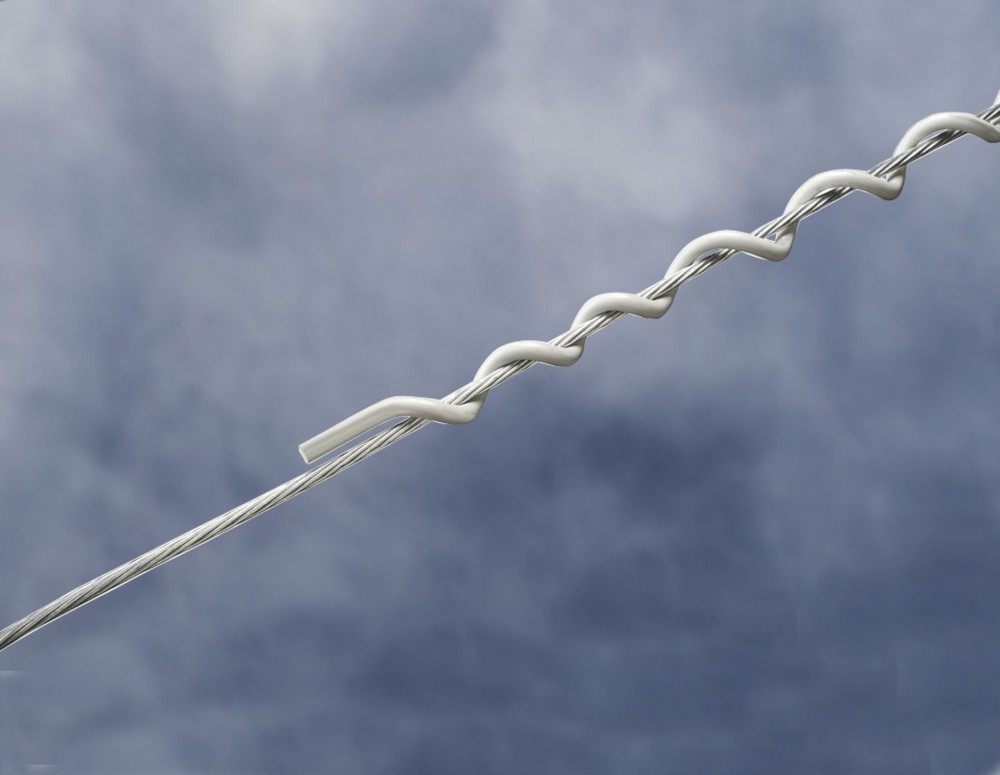
Statkraft, a leading renewable energy company, recently acquired wind projects in Chile. The three wind farms have a combined capacity of over 100 MW in the O’Higgins region, central Chile. The wind farms will generate 330 MW of electricity annually to support the national grid. This acquisition allows Statkraft to tap into Chile’s great wind power potential and expand its renewable energy. Wind projects will contribute to clean energy production and help reduce CO2 emissions. These projects have the potential to impact Chile’s energy sector. This is through supporting clean energy solutions and promoting the economic sector. The wind farms have the potential to reduce greenhouse gas emissions and promote sustainable development. This positions the country as a key player in the transition towards a low-carbon future. Spiral vibration dampers are able to mitigate the effects of wind-induced vibrations on power lines.
Wind-induced vibrations can cause stress and fatigue on power line conductors. A spiral vibration dampers absorb and dissipate the vibrational energy, including the stress on conductors. Spiral vibration dampers prevent damage to conductors such as fatigue cracks and breaks. They contribute to the reliable transmission of electricity generated by wind turbines. This is by maintaining the integrity of the power lines. Additionally, spiral vibration dampers extend the lifespan of the power line infrastructure by reducing stress on conductors. Use of spiral vibration dampers contributes to the success of wind energy projects in Chile. This article highlights the need for wind farms and spiral vibration dampers in Chile’s energy sector.
Functions of spiral vibration dampers in Chile’s wind farm development
A spiral vibration damper help to mitigate vibration-related issues in transmission lines and structures supporting wind farms. The dampers are cost-effective and practical in enhancing the durability and efficiency of transmission lines in wind projects. A spiral vibration damper ensure sustainable energy generation and distribution in challenging wind and environmental conditions. Discussed below are the common functions of spiral vibration dampers in wind farm development.

- Mitigating aeolian vibrations – wind farms use transmission lines to connect turbines to substations. Aeolian vibrations happen when steady winds cause wires to oscillate at their natural frequency. Spiral vibration dampers absorb and dissipate the vibrations to prevent fatigue damage.
- Enhancing wind farm reliability – spiral vibration dampers reduce the risk of mechanical failures due to vibrations. This ensures the uninterrupted transmission of power from wind turbines to the grid.
- Supporting grid stability – the dampers contribute to a stable energy grid by protecting transmission lines. They also reduce the likelihood of failures. This is crucial as Chile integrates more energy sources into the network.
- Reducing maintenance costs – spiral vibration dampers help reduce maintenance requirements.
- Adaptation to harsh environments – a spiral vibration damper is able to withstand harsh environments and ensure continuous performance.
- Protecting transmission lines – wind-induced vibrations lead to wear and abrasion of conductors. Spiral vibration dampers reduce the amplitude of oscillations, which enhances the lifespan of cables and connectors.
Impacts of wind projects in Chile’s energy sector
Development of wind farms in Chile has significant impacts on the energy sector. The investments from Statkraft contribute to clean energy transition, foster energy security, and align with the country’s ambitious decarbonization goals. The wind farms speed up the shift towards renewable energy, reduce emissions, and foster socio-economic development. At TTF Power, we are a one-stop-shop for utility pole hardware fittings, transmission line accessories and power line construction equipment. We provide our customers with the most extensive range of products in the industry, excellent value and knowledgeable service.The following are the impacts of wind farm development in Chile.

- Promoting renewable energy capacity – the wind projects add extra capacity to Chile’s renewable energy mix. This is by helping the country meet its growing electricity demand sustainably. Wind energy complements solar power in Chile by providing energy generation during non-peak sunlight hours.
- Supporting rural development – the wind projects involve the development of infrastructure in remote areas. They provide benefits such as job creation, infrastructure improvement, and community investments.
- Technology transfer and innovation – the development of wind projects provides advanced technologies and expertise to Chile’s energy sector. This includes deployment of advanced turbines for energy efficiency and knowledge sharing with local engineers.
- Increasing foreign investment – Statkraft’s activities attract global investors to contribute to Chile’s green energy goals. The projects also reinforce Chile’s position as a leader in renewable energy innovation.
- Reducing carbon emissions – the wind farms displace electricity generation from fossil fuel-based power plants. This helps lower Chile’s dependence on imported fossil fuels, improving energy independence and sustainability.
